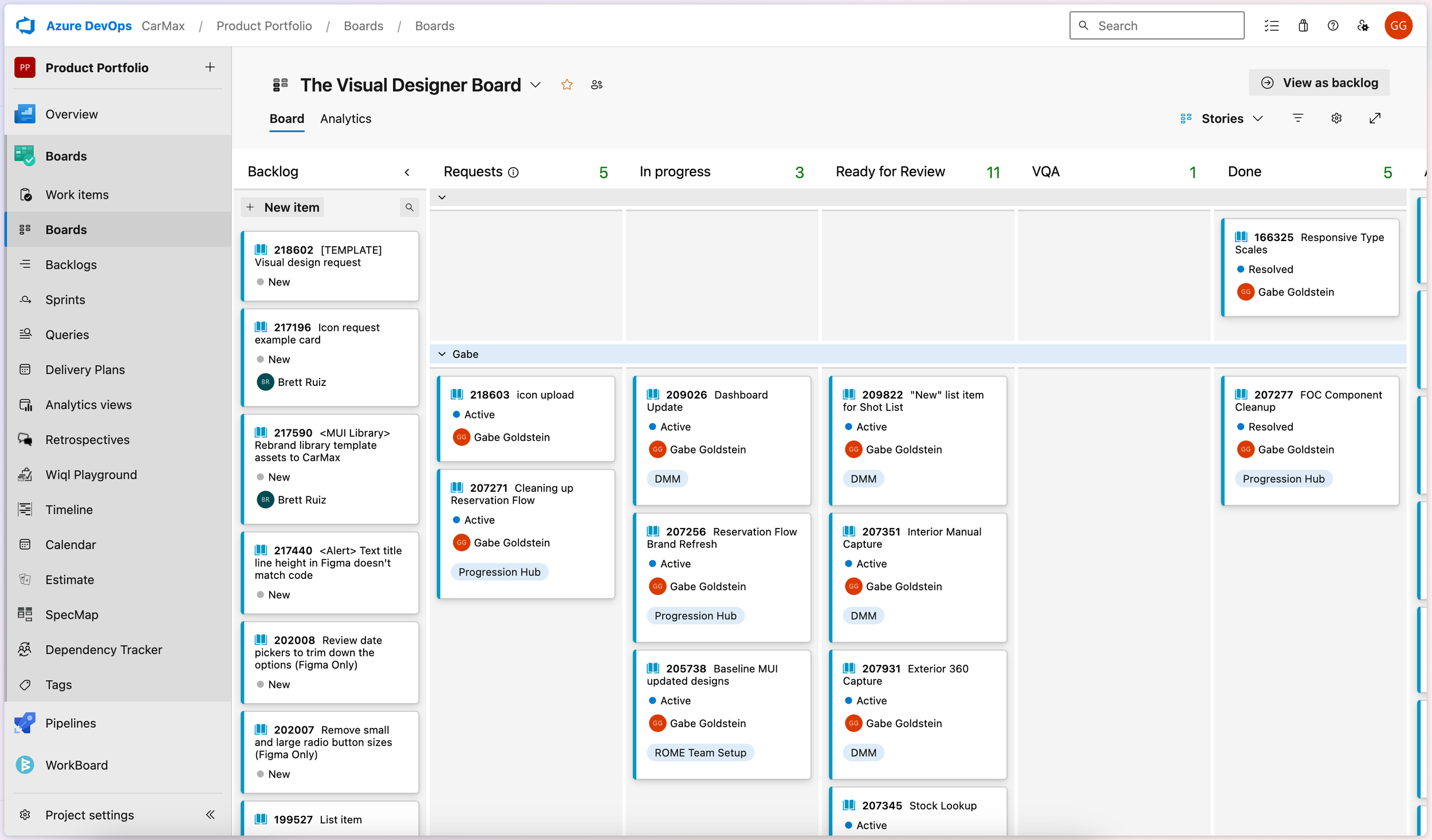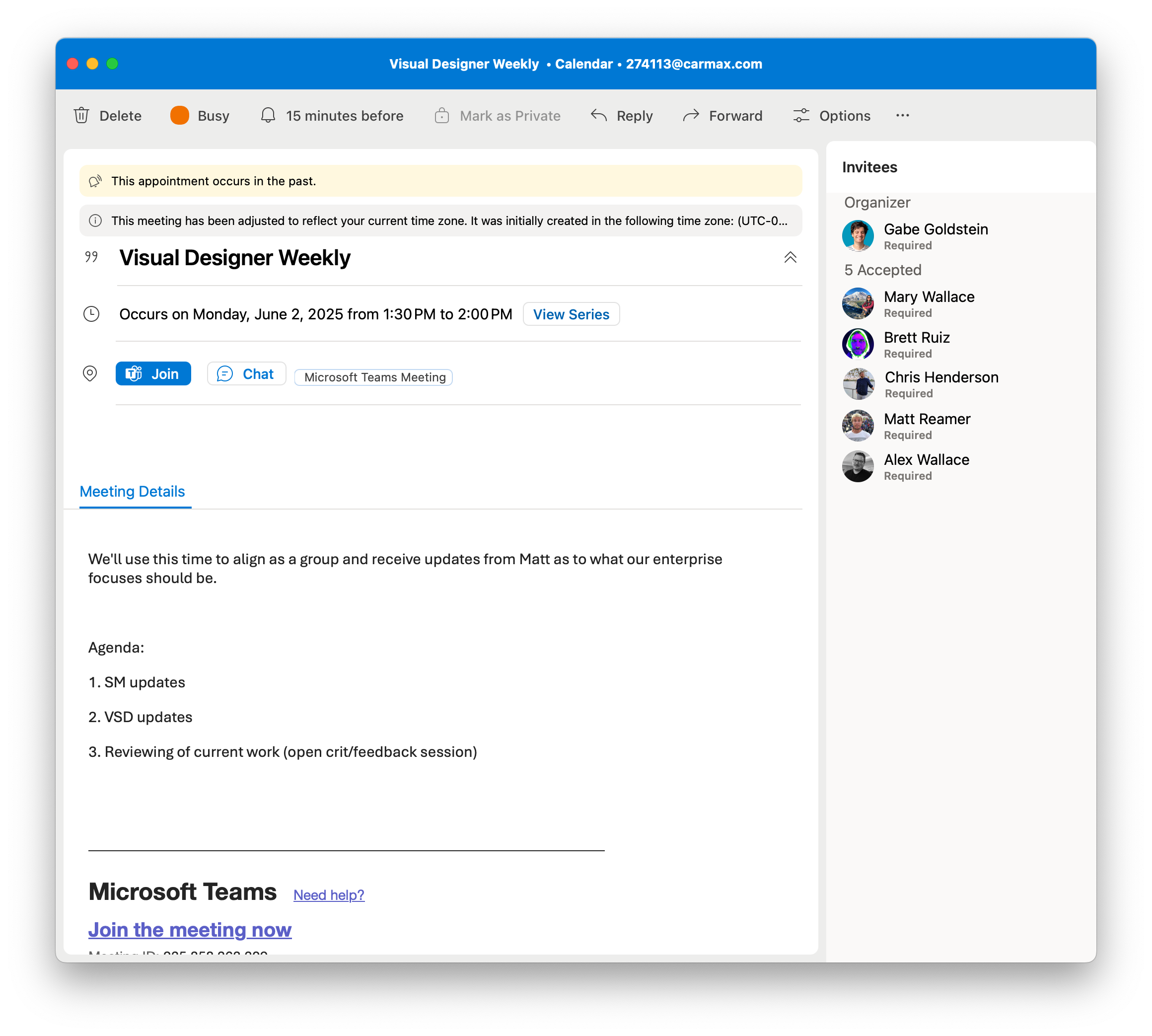Creating structure where there is none
At CarMax, I was part of a centralized design systems team responsible for defining and maintaining the components and patterns used across our digital product ecosystem. Alongside us, there was a distributed team of embedded designers who supported product teams directly, helping implement the system in real-world applications.
While this model helped with adoption, I started noticing a problem: there was very little visibility into what the embedded designers were working on. Without a shared way to track or surface work in progress, we were seeing the same components built in different places, slight variations of patterns, and missed chances to collaborate.
To fix this, I designed and implemented a lightweight tracking system that gave our team better alignment—without slowing anyone down or layering on too much process.
The Solution I Introduced
Using Azure DevOps (the agile tool already in use across the org), I created a shared board where we could see all the design systems work happening across product teams in one place.
Here's how it was set up:
I created a template card for incoming work that captured key details like scope, requester, component/pattern type, and estimated effort.
Each designer was given a dedicated swim lane to manage their own intake and tasks—maintaining autonomy while gaining visibility.
I led onboarding and communication to get buy-in from designers, and facilitated a brief weekly check-in to surface overlaps or cross-functional needs.
We agreed on a few lightweight practices to improve quality and communication — in addition to the card template on our board, I created a wiki walking others throughout the org how to best create a request and get it on our radar. This documentation lived alongside other documentation we had stood up to explain what we had to offer and how to best utilize our team’s skills.
What Changed
The process I rolled out led to immediate improvements across the board:
✅ 35% fewer duplicated efforts
Designers could see what was already in motion and connect before starting similar work.
✅ Improved consistency in design system usage
We caught mismatched or off-brand implementations early, leading to more uniform experiences across products.
✅ 25% faster completion of component-related tasks
Reusability increased, and coordination happened earlier—cutting down on redundant effort.
✅ 40% drop in visual/interaction-related bugs at release
Better visibility meant stronger alignment with system standards and fewer last-minute QA surprises.
✅ More connected, informed team
Designers felt more in sync and had a shared place to surface questions, celebrate progress, and build collective knowledge.
Why it worked
It was lightweight and flexible, not disruptive
It built on existing tools, reducing friction
It respected designers' ownership while introducing shared visibility
It created a foundation for cross-team collaboration and reuse
What started as a simple process change ended up strengthening how the design systems team operated at scale—and improved how we worked with product teams across the company.




